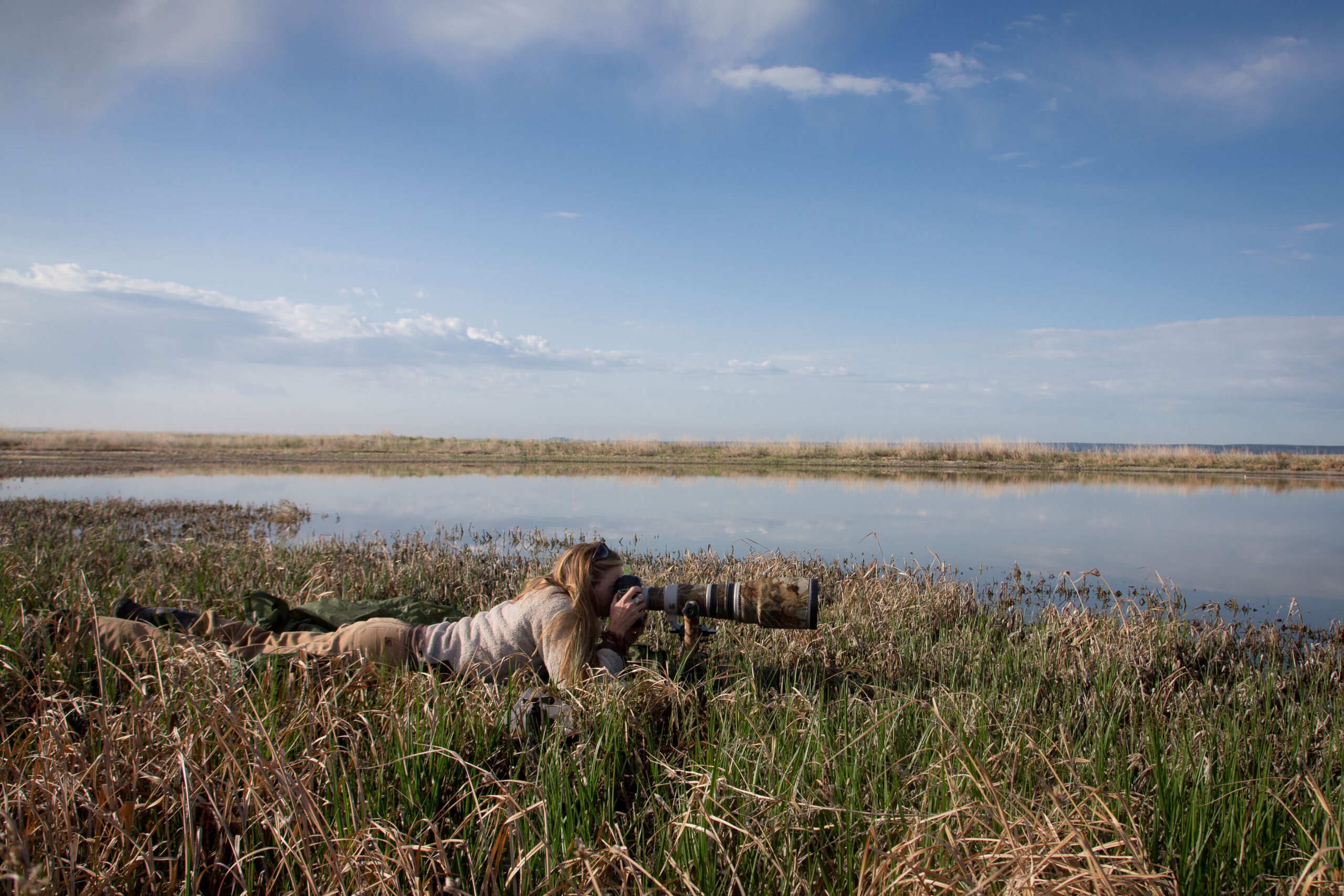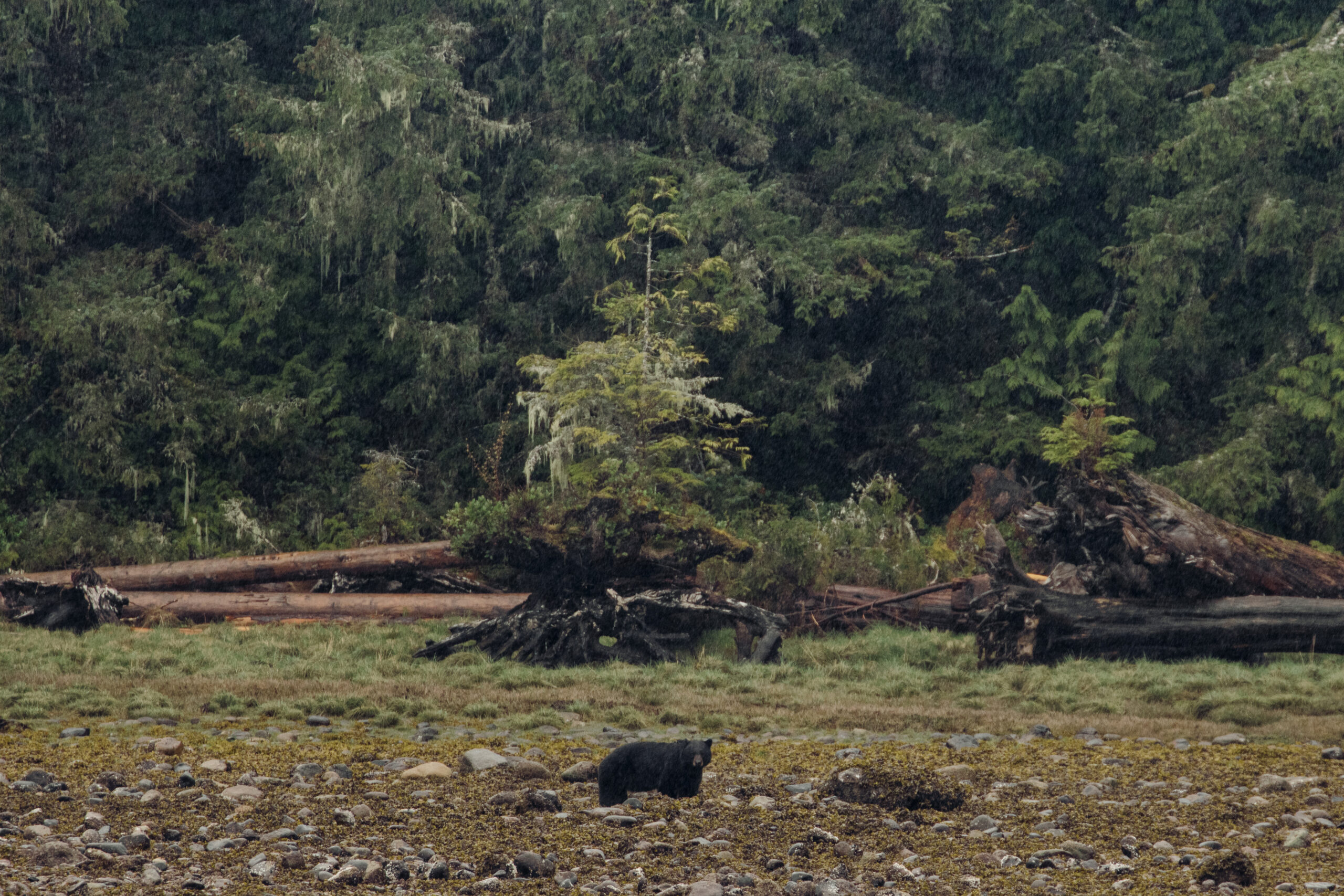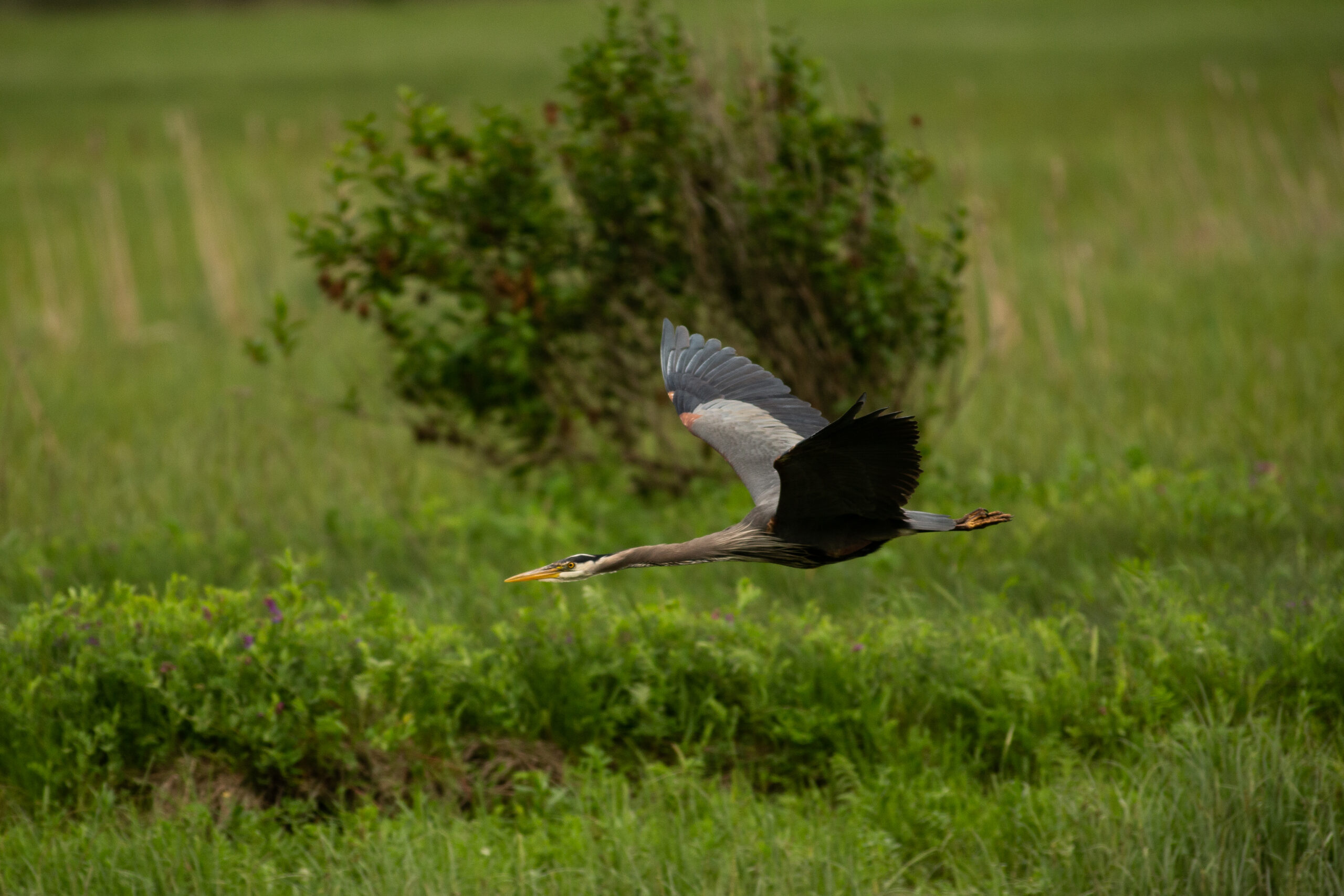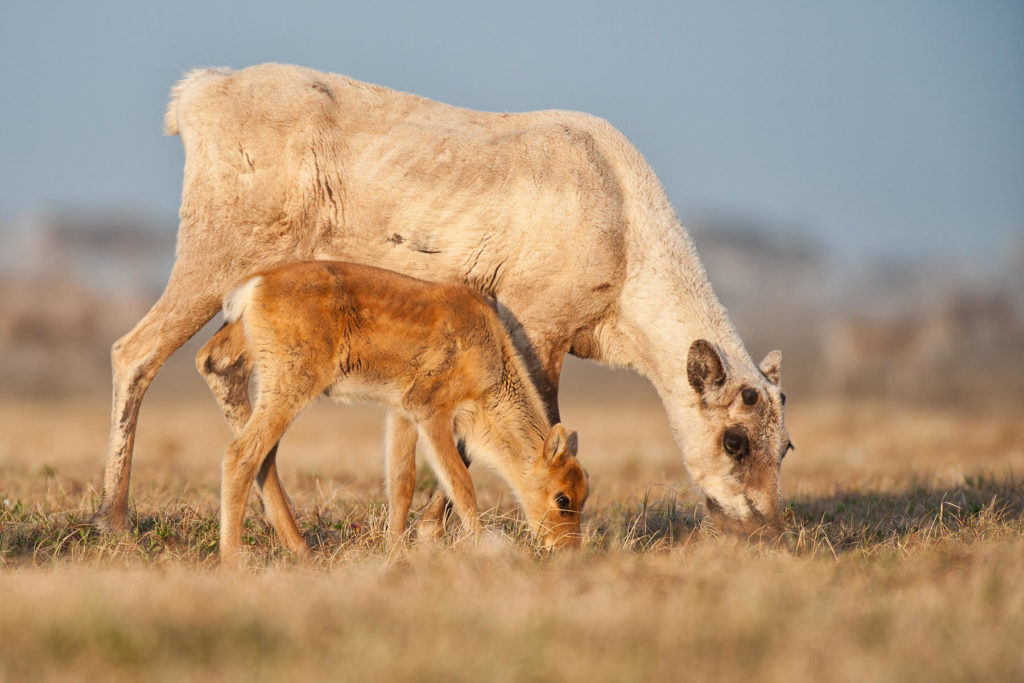
Canadians have another facet of national defence right under our noses
The current trade war with the U.S. means Canada must confront whether its domestic food...
“This is the best time in history to be a wildlife photographer,” Melissa Groo says. But, “it’s the worst time in history to be a wild animal,” the conservation photographer says.
Animals are threatened by climate change, human population growth and habitat loss. Combined with other issues like invasive species and disease, the world is facing a massive extinction crisis.
“At a time when animals are under such threat, wildlife photography is exploding,” says Groo, who is an associate fellow with the International League of Conservation Photographers and sits on the league’s ethics committee.
And these photos can come at a cost.
Humans can be disruptive, scaring animals from their nests or dens. Alternatively, animals can also become habituated to human presence. Baiting animals to get better photos is a widespread practice, according to Groo, and food habituation can put animals at higher risk of being shot by hunters or conservation officers who deem them a risk to humans.

Many organizations have guidelines for best practices in wildlife photography but, with so many photographers out there, ethics aren’t easy to enforce. An inspector from B.C.’s conservation officer service, Scott Norris, told The Narwhal B.C.’s Wildlife Act — which was enacted in 1996 to protect animals from harm — doesn’t address photography directly.
“I don’t know, when the act was written, if it was even anticipating wildlife photography,” Norris says.
In The Narwhal’s recent investigation into environmental non-profit Pacific Wild — outlining allegations of verbal and emotional abuse, bullying and harassment — photography was a passion for many former workers. Beautiful wildlife photos are a staple for most conservation organizations’ campaigns to attract and inspire people. But some of these former workers also grappled with a question: when does wildlife photography benefit conservation, and when does it serve human interests?
Paul Paquet, a wildlife photographer with Raincoast Conservation Foundation who has a PhD in zoology, says there is “a persistent lingering and self-censuring question as to whether we are just helping ourselves or helping the wildlife we photograph.” It’s a question many photographers are “not eager” to talk about, he says.
Photography is not only about conservation — it’s about creativity and art, which serves the artistic desires of people, but has the potential to still benefit wildlife, he says.
“The representation of nature through artistic photography makes it possible to evoke appreciation and mindfulness of nature, which are powerful emotional relationships that surely benefit wildlife conservation,” he writes in an email.
Groo says photographers have to constantly be asking themselves to weigh the benefits and costs of capturing wildlife shots.
“Photos can go viral in a heartbeat across social media. To come up with a really compelling photo that draws attention to the plight of a species under threat, or a landscape under threat — it’s a really powerful tool,” Groo says, but adds it’s important that people follow best practices so they don’t cause harm.
Keeping distance, not using flash and avoiding harassing animals with drones are some ethics that Groo and photographer John Marriott explain. Marriott is also on the international league’s ethics committee. He says the central question to keep in mind is: am I affecting the animal’s behaviour?
“I think a lot of times photographers purposely try and change an animal’s behaviour so they can get a shot,” Marriott says. Examples include using artificial animal calls or using food to draw animals closer to the camera.
“I would get away from the idea of thinking that you have to get close to animals to create something unique and new,” he says.

Groo says going into the field with scientists can help because they usually have a good understanding of the species they are studying and how to best interact with them. She tries to use her photos to tell the story of the destruction of a particular part of habitat or to communicate specific conservation objectives.
She says some mistakes are unavoidable, and that she still makes mistakes herself. She recalls trying to photograph a male kingfisher — bright birds with long narrow beaks — and noticing he was stressed by her presence, even though she was hidden. She saw him bring a fish to his nest tunnel on a riverbank, where either his partner was on eggs or his hatched babies would have been. At the last minute, he looked toward where she was hidden in a camouflage blind and flew away.
“It was almost as if, at the last moment, he just decided: I can’t give away the presence of my nest,” she says. “I was just so sure he was leaving because of me … I never went back.”
In The Narwhal’s investigation into Pacific Wild, one of the allegations facing co-founder Ian McAllister was that he hung a seal carcass from a tree in 2013 to attract wolves and take photos of them. A worker discovered the photos in 2015 and the incident was reported to B.C.’s conservation officer service in 2020. That year he addressed the issue publicly on Instagram.
In the post, McAllister says that he had been placing camera traps in the area for many years to try to follow the size of the wolf pack. In this case, he says a seal washed up on the beach. “There were boats in the area and potentially hunters that would be more likely to see wolves because of the seal so I decided to drag it into the forest and hoist it into a tree so that I could put a few camera traps nearby,” his post states.
“The dilemma — and yes opportunity — is that when I returned to the camera traps there were wolves in the area and I spent some time to get images of them. A few of the shots were good enough to publish and one of them ended up on one of my books.”
Reflecting on the incident, McAllister states this was an anomaly. “This is the only image that I have ever taken in over 30 years of photography and film work that could be described in the ‘baited’ category other than throwing tuna in the water to take pictures of sharks,” he writes. In hindsight, he states the image should have been deleted because of how it was taken.
“This is a good discussion to be having because so many of the images we see now of wildlife are of animals being followed and photographed by telemetry, on the roadside eating carrion, or in some kind of artificial situation,” his post concludes.
McAllister did not respond directly to The Narwhal’s request for comment.
Groo didn’t speak about Pacific Wild directly, but she says conservation photographers should be constantly questioning their intentions with their photography.
“I think it’s a really good question of, what [photo] are you hoping to get that you haven’t gotten already?” she says. “And really weighing the cost of impinging or imposing on that wild animal’s life. Is all that really worth what you’re going to come up with? Is it really something so unique, so singular, that doesn’t already exist in your archive?”
“Is it really necessary? And is this really in the best interest of everyone?”
Some organizations have created ethics guidelines to ensure photographers operate respectfully and without exploiting people or animals, including Raincoast Conservation Foundation, where Paquet works. (McAllister was a co-founder of Raincoast but parted ways with the organization in 2008 over differences with its leadership. Raincoast launched a copyright lawsuit with McAllister, but the issue was settled out of court.)
Paquet says the central guiding principles are “do no harm,” and that “the welfare of the animals is more important than the photograph.”

Raincoast’s ethics policy outlines how to work with both people and wildlife. It emphasizes consent and consultation, and specifically references a guide written by Jess Housty, a Heiltsuk community organizer and advocate. She writes about centring Indigenous voices, avoiding staging or stereotyping and considering how your work benefits the Indigenous people you are shooting, or if you are just being extractive. She says wildlife photography can be extractive as well.
“I have complex feelings about [wildlife photography],” Housty says in an interview.
“It can raise awareness and raise money, and sometimes that’s really important. But I think specifically, when you’re either monetizing it for a career or when you’re using it to advance a cause, it just becomes so dependent on the personal integrity of the person doing the photography. And frankly, I don’t trust the personal integrity of most conservationists.”
William Housty, conservation manager for Heiltsuk Integrated Resource Management Department, who is Jess Housty’s brother, says there are benefits to wildlife photography and ecotourism but “it’s getting to be a bit much in some areas.” He says if there are too many people, it can stop animals, like bears, from visiting their regular spots.
“Wildlife filming has just kind of gotten out of hand,” he says. “It definitely has its perks and potential to generate interest in ecotourism and those sorts of things but we just have to be really careful about how it’s done … because it could have harmful impacts on the surrounding environment.”
Based on the range of guidelines and advice from wildlife photographers, one thing is clear: keep your distance.
Marriott says he follows Parks Canada’s guideline to stay 30 metres — or three bus lengths — from any animal that is not a predator. For predators like bears and wolves, it’s 100 metres.
The International League of Conservation Photographers’ ethics guidelines emphasize “minimizing any negative physical, emotional or behavioral impacts” on animals, as well as “accuracy” and “transparency” about how an image was captured — like with bait or at a game farm or with an artificial animal call, Groo explains.
“If they feel embarrassed about sharing how they got the shot when they share the photo on social media, I think that should be a good telltale sign for us as photographers, maybe we shouldn’t engage in that practice,” she says.

Raincoast’s guide emphasizes following the protocols of Indigenous Nations, as well as Canadian laws. It outlines not altering the wildlife’s behaviour, keeping distance and not spending more than one or two hours with animals “to reduce the impact that our presence has on their routine.”
“We always put the wildlife subject first,” it reads.
They also promise to never shoot wildlife in captivity or on game farms, where photographers can take photos of gated wild animals.
Groo says guidelines are important but following ethics is largely a personal responsibility.
“It’s incumbent on each of us,” she says. “Each of us has an impact, each of us has influence and power.”
Get the inside scoop on The Narwhal’s environment and climate reporting by signing up for our free newsletter. On March 17, federal Conservative Leader Pierre Poilievre...
Continue reading
The current trade war with the U.S. means Canada must confront whether its domestic food...

Residents and nearby First Nations wanted a new environmental impact assessment of the contentious project....

Growing up, Christian Allaire loved spending summers with his cousins in his grandma’s backyard, near...
